Did you want to be a captain when you were young? Do you want to have a cruise trip somewhere in Asia? If your answer is “yes”, why not take China into consideration? As one of the most ancient countries in the world, China boasts diversified culture and a wide collection of places of interest. You will explore the world’s third longest river by taking a Yangtze River Cruise China. On this Yangtze River Cruise from Shanghai, you will be impressed by the beautiful scenery, such as the goddess-like peak in Wu Gorge, the largest power station in the world, and the Yellow Cloth Shoal printed on the 20-yuan-note. On your Yangtze River Cruise Yichang to Chongqing, you will have a shore excursion to the Heaven Mountain. You are just one click away from your China Yangtze River Cruise!

On arrival, your guide will be waiting for you at the arrival hall. After giving you a warm welcome, your guide will escort you to the hotel to get over jet lag by having a good rest.
After breakfast, you will head to your first stop in Shanghai (in Southeastern China), Jing’an Temple, an ancient Buddhist temple located in Jing’an District. As the largest Buddhist temple in Shanghai, Jing’an Temple covers more than 22,000 square meters, which is equal to the size of three football fields. According to the inscription of a stone tablet in the temple, Jing’an Temple can date back to the Three Kingdoms Period (220 - 280). Inside the 1800-year-old temple, there is a 3.83-meter-tall Buddha statue of Shakyamuni (the founder of Buddhism), which was carved out of a single block of jade stone.
Then you will visit Yu Garden (closed each Monday). When you enter this 400-year-old garden, you will see strange-shaped rocks, exquisite buildings, and finely-carved sculptures. Every attraction you will see in this huge garden is the masterpiece of those renowned craftsmen –of ancient China. One typical attraction of them is the Nine-dragon Pond, about which you may feel puzzled because there are only four dragon-head-shaped rocks among the rock walls of the pond. But if you look at the water, you will find the reflections of them to be another four. And the pond itself, in the shape of a dragon, represents the last one of the nine dragons.
Your last stop this morning will be Shanghai Old Street, an 846-meter-long commercial street combining the architecture of two different periods. The western part of the street reflects the architecture of Ming (1368-1644) and Qing (1636 - 1912) Dynasties, which features red pillars, black-tiled roofs, and white walls. And the eastern part of Shanghai Old Street, characterized by lattice windows, wooden board shop-fronts, and swing doors, is in the style of the Republic of China period (1912 - 1949). Here you can find some traditional Shanghai foods, a typical one of which is sweet green rice ball. Sweet green rice ball is a kind of popular Shanghai dessert made of glutinous rice, Chinese mugwort, and sweet bean paste. In the past, sweet green rice ball was only made during the Qingming Festival (April 4 or 5), because its main ingredient, Chinese mugwort, is only available in the early spring.
After lunch, you will visit the world’s second-tallest building, the 632-meter-high Shanghai Tower, which is also the tallest building in China. Looking from outside, Shanghai Tower is like a Chinese dragon poised to spiral its way up to the sky. Notably, the design of Shanghai Tower highlights sustainable development. Compared with other buildings with similar heights, Shanghai Tower consumed 25% less steel in terms of structure. And this environment-friendly building can collect rainwater and wastewater for flushing toilets and irrigating green areas. In addition, the double-layered insulating glass façade, which insulates the hot and cold air outside of Shanghai Tower makes people in this building don’t need too much air-conditioning during hot or cold weather.
After your visit to Shanghai Tower, you will head to Nanjing Road, extending as much as 5.5 kilometers. As a must-visit place for locals to do Spring Festival shopping, Nanjing Road is also a favorite haunt of foodies. In Nanjing Road, there are numerous time-honored shops selling mouth-watering foods, such as Shen Dacheng’s desserts, Zhenlaodafang’s meat moon cakes, and Yanyunlou’s roast duck. In Yanyunlou, you can observe how a roast duck is sliced into pieces. Similar to Beijing roast duck, roast duck in Yanyunlou is served with steamed pancakes, shredded cucumber, and spring onion. Compared with the expensive Beijing duck, Yanyunlou’s roast duck, on a par with its Beijing counterpart, is much more affordable.
Then you will go to the last stop of your first day in Shanghai, the Bund, one of the most fascinating attractions in Shanghai. Extending more than 1.5 kilometers, the Bund attracts visitors from home and abroad with its distinctive buildings. The largest and the most imposing one of them is HSBC(Hong Kong and Shang Hai Banking Corporation) Building, where Shanghai Pudong Development Bank is now located. In front of this western classic building flank two bronze statues of lions. The roaring one is Stephen, nicknamed after Alexander G Stephen, the then Bank Manager of Hong Kong. And the calm one is nicknamed Stitt (after Gordon H Stitt, the then Bank Manager of Shanghai).
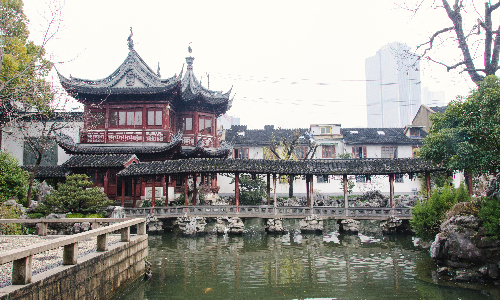
 Yichang
Yichang Yangtze River Cruise
Yangtze River Cruise After breakfast, you will be transferred to the train station and take the estimated train D956 09:30/15:53 to Yichang East Station. Your local guide will be waiting for you at the station and greet you with a warm welcome. Then you will board the bus provided by the cruise company for Maoping port, where you will take a cruise and explore the Yangtze River. Extending more than 6,387 kilometers, the Yangtze River represents the longest river in Asia and the third-longest river in the world. And Yichang of Hubei Province (in Central China) is situated in the dividing point of the Yangtze River’s upper reaches and middle reaches.
After breakfast, you are welcome to join the morning exercise of Taiji, a world-known Chinese martial art. Different from other conventional Chinese martial arts, Taiji puts an emphasis on slow moves, which seems to be easy but is actually very tiring in practice. Studies show that practicing Taiji is beneficial to your health both physically and mentally. You are suggested to follow the moves and cadences of the Taiji master, and you may feel its wisdom of “attack by means of defense”. You can ask your companion to take some pictures of you when you are practicing this mysterious oriental martial art. If you post these pictures on your Facebook, you will surely get a lot of likes from your friends.
You will continue your Yangtze cruise tour after enjoying your buffet lunch. This afternoon, you will have a shore excursion to Three Gorges Dam, the largest power station in the world, which is about 3,335 meters long and 185 meters tall. Each year, the Three Gorges Dam can generate an average of 100 billion kWh of electricity, reducing carbon emissions by nearly 100 million tons. Moreover, Three Gorges Dam also plays a vital role in flood prevention. Its flood storage capacity of 22 cubic kilometers means that the frequency of major downstream flooding can be reduced from once every 10 years to once every 100 years.
In the evening, you will attend the Captain’s Welcome Reception, in which the captain of the cruise and his crew will give you a warm welcome and perform for you. After enjoying your buffet dinner, you are free to arrange your time.
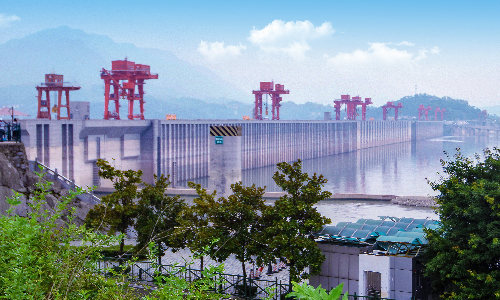
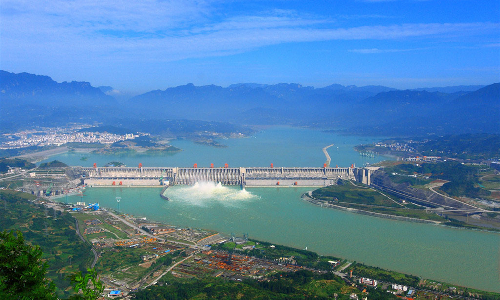
After breakfast, you can continue your Taiji morning exercise. Then you will take a small boat to explore Shennong Stream. Located in Badong County of Hubei Province (Central China), Shennong Stream extends about 60 kilometers. Legend has it that Shennong(name of a person), also known as Yan Emperor, used to be here risking his life experimenting on himself with the herbs he had collected from the cliffs. Through trial and error, he finally identified the functions of more than 1,000 herbs. Therefore, the stream, around which Shennong used to collect herbs, was named Shennong Stream.
After your buffet lunch, you will continue your cruise on the Yangtze River. In the afternoon, the ship will pass through Wu Gorge, the longest one of the Three Gorges, which extends more than 46 kilometers. Wu Gorge is well-known for its twelve peaks, and the Goddess Peak is the most charming one. Seen from the distance, Goddess Peak is like a lovely maiden. There is also a legend about this splendid peak. Long ago, a goddess named Yao Ji, together with her sisters, slipped out of heaven and traveled to the flood-stricken human world. She saved a man named Da Yu from the flood when passing by Wu Gorge. Dayu was washed away by the flood when he was doing the flood-control work, which Dayu had engaged in for many days. Luckily, he was saved by Yao Ji. Moved by Da Yu’s resolution in controlling the flood, Yao Ji decided to stay and offer a helping hand to him by using her supernatural power. After the flood was put under control, Yao Ji, running out of her supernatural power, became a peak guarding Wu Gorge forever. This peak is today’s Goddess Peak.
After passing through Wu Gorge, you will cruise to Qutang Gorge, the shortest but the most breathtaking one of the Three Gorges. Although Qutang Gorge is only 8 kilometers long, it may be the most unforgettable attraction during the Yangtze River cruise. The peaks on both sides look as if they had been cleaved by axe. Some of them are so sharp that they look like javelins aiming at the sky. When passing by Kuimen, you may feel that you have seen the same scene before but can’t recall it, until you take out a ten-yuan banknote. Here you are suggested to take some pictures of Kuimen and post the best one together with a ten-yuan banknote picture on your Twitter. You will be bound to get a lot of retweets.
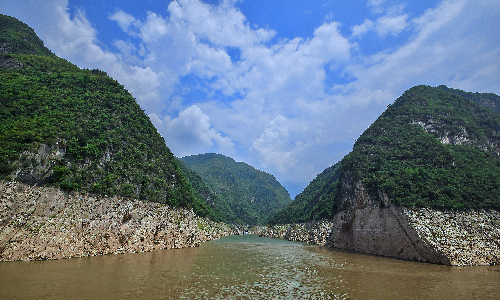
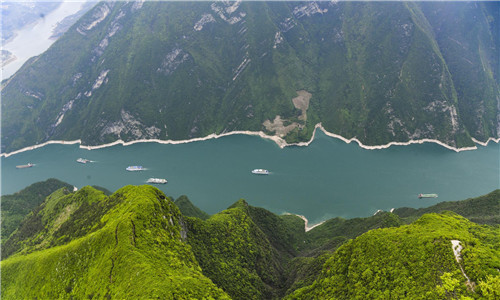
This morning, you can take your time when having your buffet breakfast. Because the whole morning this day will be free.
In the afternoon, you will start your shore excursion to Fengdu “Jade Emperor”, an attraction highlighting the Chinese concept of heaven, hell, and the human world. Fengdu “Jade Emperor”, also known as Heaven Mountain, was built on the original locations of Wannian Temple, Magu Cave, and Magu Temple. Looking from a high place, you will get a bird’s-eye view of Fengdu “Jade Emperor”, which looks like a giant’s body as a whole. An impression as such is enhanced by a huge stone head erecting on the mountain. And you can easily guess that the giant is Jade Emperor judging from the name of the attraction. Jade Emperor is regarded by the Chinese as the king of heaven, who holds the equivalent position to Jesus in Christianity.
In the evening, a Captain’s Farewell Banquet will be held for you. The captain and the crew will sing a farewell song for you.
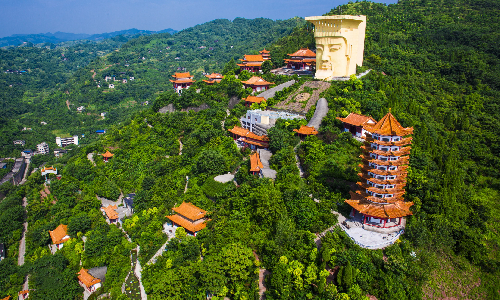
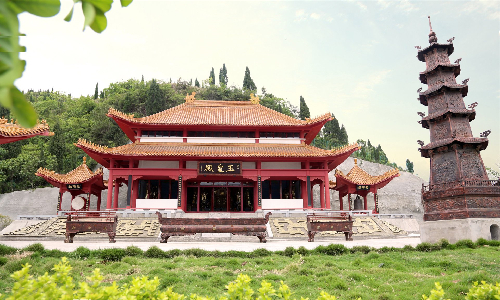
 Chongqing
Chongqing Guilin
Guilin After breakfast, your guide will drive you to the airport in Chongqing (in Southwest China), where you will take the estimated flight EU1997 12:45/14:25 to Guilin of Guangxi Province in Southern China. On arrival, you will see your Guilin guide waiting for you in the arrival hall. And then you will be transferred to the hotel, where you can have a good rest.
 Yangshuo
Yangshuo Guilin
Guilin After breakfast, we will drive southeast for about 35 kilometers to Mopanshan Port and it will take about one hour to get there. Upon arrival, you will start the Li River Cruise to Yangshuo and you will have your lunch on ship. There are three-star cruise and four-star cruise to choose from. The former provides Chinese box lunch, and the latter provides Chinese buffet lunch. By default, your cruise will be a three-star one. If you want a four-star cruise, please tell us in advance. When you near Yellow Cloth Shoal, you may find many visitors on the cruise holding a 20-yuan banknote for taking pictures. That is because the Yellow Cloth Shoal is the prototype of the picture printed on the 20-yuan banknote.
In the afternoon, you will explore Yangshuo West Street, which extends less than 1 kilometer. The buildings on both sides of the Yangshuo West Street are in the styles of Ming (1368-1644) and Qing (1636-1912) Dynasties, which feature slope roofs, hanging balconies, and white-washed walls. On this quaint street, you can also find some local specialties, such as braised beer fish, osmanthus cake, and osmanthus wine. Notably, osmanthus cake, with a light fragrance of osmanthus flower, is made of glutinous rice, sugar, and osmanthus flowers. Like other traditional Chinese desserts that highlight dietary regimens, osmanthus cake can aid digestion and help prevent influenza.
After finishing your tour in Yangshuo West Street, you will be escorted to your hotel in Guilin. Then you can spend some private hours and have a good rest.
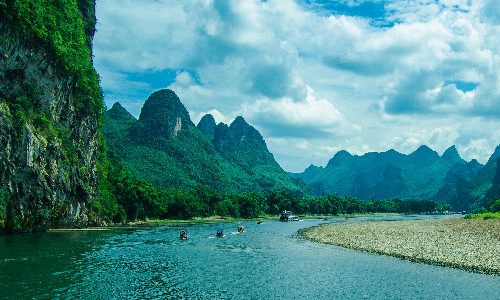
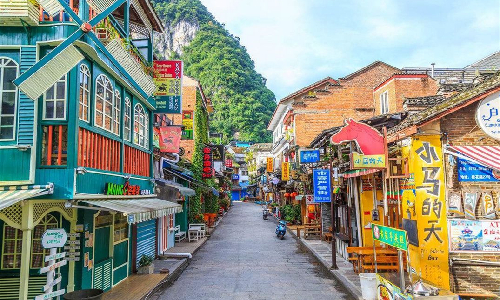
 Xi’an
Xi’an After breakfast, your guide will drive you to the airport in Guilin, where you will take the estimated flight GS7684 12:10/14:05 to one of the Chinese Four Great Ancient Capitals, Xi’an. Your Xi’an guide will wait for you at the arrival hall and escort you to the hotel.
After breakfast, you will visit the world-famous Terra Cotta Warriors and Horses Museum, located at about 40 kilometers northeast of downtown Xi’an. It will take you about 50 minutes to get there. Listed in the UNESCO World Heritage, Terra Cotta Warriors and Horses can be traced back to more than 2,200 years ago. As the funerary objects of Mausoleum of the First Qin Emperor(Emperor Qin Shi Huang), the Terra Cotta Warriors and Horses were the substitutes of the living persons. Before Emperor Qin Shi Huang’s reign (247BC - 210BC), the death of a monarch means that there would be thousands of living persons would be buried as the funerary objects. In the first place, Emperor Qin Shi Huang intended to use thousands of living persons when he planned to build his mausoleum. But he changed his mind soon after his prime minister, Li Si, strongly suggested replacing the living persons with Terra Cotta Warriors and Horses. That was because the use of living persons would impair Qin Empire’s national strength.
You will visit Xi’an Beilin Museum after finishing your lunch. The earliest museum in Xi’an boasts more than 10,000 collections, the majority of which are tombstones, stone tablets, and copies of inscriptions. “Beilin” means “a forest of tablets”. The tablets in Xi’an Beilin Museum are made from the Han Dynasty to the Qing Dynasty (202BC - 1912AD), from which you may see the differences of Chinese characters and different features of the Chinese inscriptions in different times. If you want to learn Chinese calligraphy, these inscriptions may be helpful in your study.
Your last stop this day will be Big Wild Goose Pagoda, a 64-meter-tall pagoda built in the Tang Dynasty (618 - 907). Situated in the Daci’en Temple in southern Xi’an, Big Wild Goose Pagoda is composed of 7 floors. The pagoda was built to store the Buddhist scriptures, Buddha statues, and Sarira (crystal-like bead-shaped object that are found among the cremated ashes of Buddhist spiritual masters) that were brought back to China from India by Xuan Zang. Xuan Zang had spent 17 years traveling to India to bring a wealth of Buddhist scriptures back to China and had spent another 19 years translating them into Chinese. The conscientious Buddhist master, who was still translating Buddhist scriptures at the last minute of his life, devoted his whole life to the promotion of Buddhism. After your tour in the Xi’an Beilin Museum, you will be escorted to the hotel.
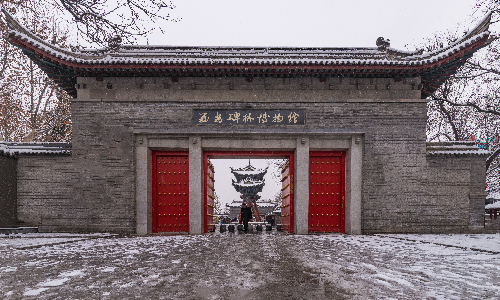
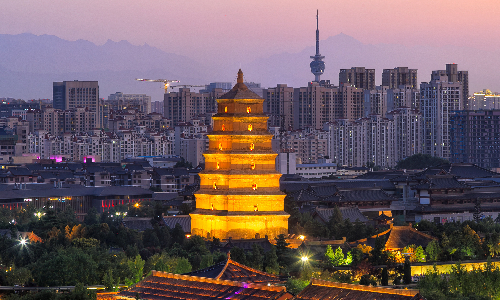
 Beijing
Beijing After breakfast, your guide will drive you to the train station, at which you will take the estimated high-speed train G350 10:22/14:46 to Beijing. Upon arrival, your Beijing guide will pick you up and escort you to the hotel. As one of the Chinese Four Great Ancient Capitals, Beijing is also China’s hub of politics, culture, and international communication. As of November 1st in 2020, Beijing, covering a total area of about 16,410 square kilometers, has a permanent population of more than 21,893,095.
Free Time Suggestion:
Upon arrival, you will still have several free hours. If you want to take a stroll around Beijing, Wangfujing Street will be a great choice. Located in Beijing’s Dongcheng District, Wangfujing Street is 1,818 meters long in total. Wangfujing Street got its name in 1915. Before then, the old street was called Wangfu Street. “Wangfu” means “prince’s mansion”. In the Ming Dynasty, there were 10 prince’s mansions on this street, hence the name. In 1915, 3 years after the fall of the Qing Dynasty, the street was renamed “Wangfujing Street” as there was a well on the street. And “jing” refers to “well” in Chinese. On this ancient street, you can buy some traditional Beijing trinkets as souvenirs. A typical one of them is the Chinese Knot, which is a kind of decorative handicraft that symbolizes peace, happiness, and solidarity. People in Beijing always choose red cords to make a Chinese knot as red embodies luckiness in the Chinese culture.
After breakfast, you will explore the largest city square in the world, Tian’anmen Square, which covers more than 440,000 square meters, about the size of the Vatican. When you take a look at the Chinese national flag flying over your head, you may wonder why the flag does not fly at the top of the mast. With the full length of the mast measuring 32.6 meters, the flag will stop at 28.3 meters. There is actually a special meaning behind the number 28.3. That is because the Communist Party of China was established in July 1921, and the People’s Republic of China was founded in October 1949. It took 28 years and 3 months in total for the Communist Party of China to found the new China. The number 28.3 is for commemorating that historical event. In addition to the number 28.3, there is another significant design for the base of Chinese national flag. The base is enclosed by guardrails composed of 56 steel bars, which embody the 56 ethnic groups of China.
Then you will visit the Forbidden City (closed each Monday), where 24 Emperors of the Ming and Qing Dynasties had lived. As one of the world’s largest palace complexes, the Forbidden City covers more than 0.72 square kilometers, nearly three times the size of Kremlin in Russia. There is a total of 9,999.5 rooms in the Forbidden City. And a question as such may spring to your mind that why the number is 9,999.5 not 10,000? According to legend, only Jade Emperor, the Emperor of Heaven, is entitled to possess a palace with 10,000 rooms. And the Emperor of the human world, who claimed himself to be the son of Jade Emperor, is not allowed to surpass the father. If you still have a faint idea about the number of rooms in the Forbidden City, you can do a calculation as follows. If you were 20 years old now and you needed to visit one different room of the 9,999 rooms per day, how old would you be when you finished your visit to all the rooms? Let me tell you the answer, you would be 47 years old at that time!
After finishing your lunch, you will explore the Hutong, a complex of traditional Beijing residences. The Hutong is well-known for its variety. If you are not a local, you will be very likely to lose your bearings in these maze-like valleys. There are mainly two different kinds of residences in the Hutongs: Siheyuan and Dazayuan. The former refers to a courtyard surrounded by rooms on four sides. Different from a Siheyuan, in which only lives a single family, a Dazayuan usually accommodates more than one family. Actually, the Dazayuan is transformed from the Siheyuan. At the very beginning, when the owner of Siheyuan has to lease out some of the rooms to support the family, then a Siheyuan becomes a Dazayuan. Here you can take a rickshaw to explore the Hutongs, where you will have a general knowledge about the daily life of Beijing locals. And you will have an opportunity to enter a local family to have a close contact with the locals.
Your next stop in Beijing will be Summer Palace, an imperial garden built in the Qing Dynasty. Summer Palace is situated in the western suburbs of Beijing and covers about 3 square kilometers. Notably, Summer Palace boasts the longest corridor in the world, which is as long as 728 meters. There are 548 pillars in the Long Corridor of Summer Palace. And each of them was painted with colored paintings, the bulk of which are about beautiful natural landscapes and scenarios in the Four Great Classical Novels of Chinese Literature. What’s more, all the paintings on these pillars are distinct. One of them is about the story of Three Visits to the Thatched Cottage. In the Three Kingdom Period (220 - 280), Liu Bei, one of the three monarchs at that time, visited the thatched cottage of a capable talent named Zhuge Liang three times. After having been firmly refused twice, Liu moved Zhuge Liang for the third time and succeeded in recruiting him as his military counselor. After your tour to Summer Palace, you will be transferred to your hotel.
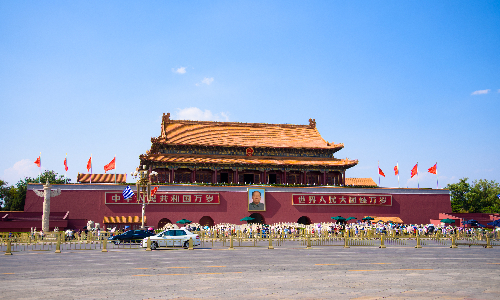
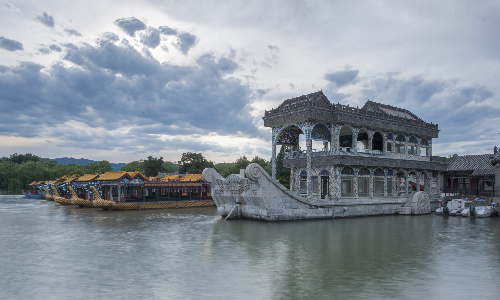
After breakfast, your guide will drive you to Ming Tombs, which is about 50 kilometers northwest of downtown Beijing. It will take about 1 hour to get there. Ming Tombs is the tomb complex of Emperors of the Ming Dynasty, where 13 Ming Emperors, 23 Empress, 2 princes, over 30 concubines, as well as 2 eunuchs were buried. Here you will visit the Sacred Way, which is a 7.3-kilometer-long road to the Chang Tomb. On some part of the Sacred Way stands a stele named Dismounting Stele. In the past, the officials riding a horse must dismount when they passed here. Dismounting is considered a way to show respect to the deceased Emperor. After exploring the Sacred Way, you will visit Ding Tomb, the tomb of Zhu Yijun, the thirteenth emperor of the Ming Dynasty. Covering a total area of 182,000 square meters, Ding Tomb is the only excavated one of the 13 Ming tombs. At the very beginning, the archaeological team found a underground palace in Ding Tomb. When the gate of this palace was opened, no one dared to enter for fear of hidden traps and toxic gases. In order to test the security of this mysterious palace, one of the team members bought a rooster from the market and threw it into this palace. After 7 days’ test, the crow of the rooster could still be heard in the morning. At that moment, the team members felt relieved and entered the underground palace.
After lunch, you will head to Mutianyu Great Wall, which is about 44 kilometers northeast of Ming Tombs. We will drive for about 1 hour to get there, during which you can have a look at the scenery outside the window. As the longest section of Chinese Great Wall, Mutianyu Great Wall has a total length of 5,400 meters. In the past, Mutianyu Great Wall played an important role in warding off the enemy. Here you will explore the Mutianyu Great Wall by taking a chairlift or cable car. When seen from above, Mutianyu Great Wall under your feet looks like a Chinese dragon meandering through the unspoiled forest. After completing the visit to Mutianyu Great Wall, you can take the cable car or take the toboggan (only for the people under 60 years old) to get down the Great Wall. Then you will be escorted to your hotel.
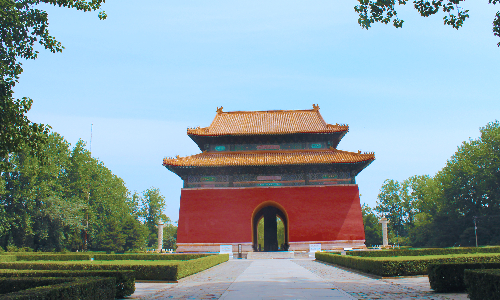
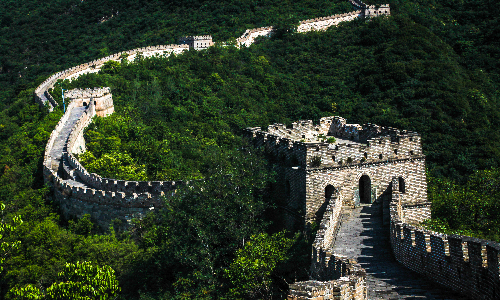
After breakfast, your guide will escort you to the airport according to your flight schedule. Before departure, your guide will remind you to check your luggage in the hotel and help you check out. China Tour Star looks forward to your next meaningful China journey!
Editor: Yuxin Zhou
Proofreader: Yan Liu
| City | Five Star hotel list | Four Star hotel list |
|---|---|---|
| Shanghai | Ocean Hotel Shanghai | Courtyard by Marriott Shanghai Central |
| Yangtze River Cruise | Victoria Anna | Victoria Anna |
| Guilin | Lijiang Waterfall Hotel | Guilin Bravo Hotel |
| Xi'an | Tianyu Gloria Grand Hotel Xi'an | Sunworld Dynasty Hotel |
| Beijing | Sunworld Dynasty Hotel Beijing Wangfujing | Sunworld Hotel Wangfujing |
 |
![]() About your child or infant, please contact us for a discounted price.
About your child or infant, please contact us for a discounted price.



We started with a few days in Beijing & ended in Shanghai, from where we visited the Forbidden City and Great Wall. In between we visited Terra Cotta Warriors Museum, Panda Base, Shanghai Disneyland.

We had a wonderful holiday in China which will remain long in the memory. China is a breathtakingly beautiful country full of splendid temples and palaces, mountains and rivers, peaceful rural scenes and bustling shopping streets.
 QUICK ENQUIRY
QUICK ENQUIRY